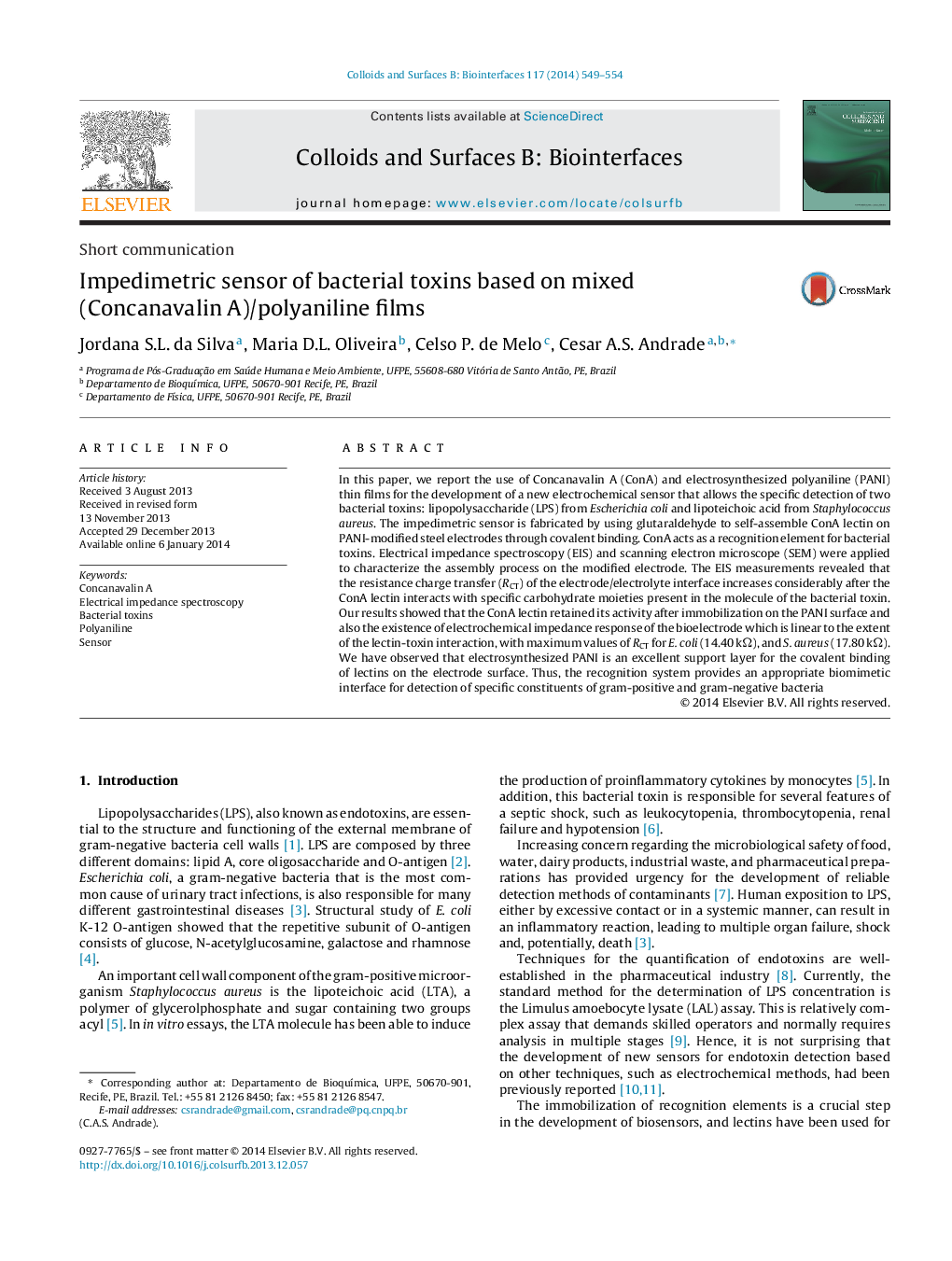| کد مقاله | کد نشریه | سال انتشار | مقاله انگلیسی | نسخه تمام متن |
|---|---|---|---|---|
| 599953 | 1454287 | 2014 | 6 صفحه PDF | دانلود رایگان |

• We developed a biosensor for bacterial toxins based on lectin and conducting polymer.
• The lectin was covalent bound to the PANI on the electrode surface.
• PANIG–ConA–BSA system can be used for specific detection of bacterial toxins.
• A simple and sensitive biosensor for detection of LPS and LTA was obtained.
• The biosensor allows the specific detection of two bacterial toxins.
In this paper, we report the use of Concanavalin A (ConA) and electrosynthesized polyaniline (PANI) thin films for the development of a new electrochemical sensor that allows the specific detection of two bacterial toxins: lipopolysaccharide (LPS) from Escherichia coli and lipoteichoic acid from Staphylococcus aureus. The impedimetric sensor is fabricated by using glutaraldehyde to self-assemble ConA lectin on PANI-modified steel electrodes through covalent binding. ConA acts as a recognition element for bacterial toxins. Electrical impedance spectroscopy (EIS) and scanning electron microscope (SEM) were applied to characterize the assembly process on the modified electrode. The EIS measurements revealed that the resistance charge transfer (RCT) of the electrode/electrolyte interface increases considerably after the ConA lectin interacts with specific carbohydrate moieties present in the molecule of the bacterial toxin. Our results showed that the ConA lectin retained its activity after immobilization on the PANI surface and also the existence of electrochemical impedance response of the bioelectrode which is linear to the extent of the lectin-toxin interaction, with maximum values of RCT for E. coli (14.40 kΩ), and S. aureus (17.80 kΩ). We have observed that electrosynthesized PANI is an excellent support layer for the covalent binding of lectins on the electrode surface. Thus, the recognition system provides an appropriate biomimetic interface for detection of specific constituents of gram-positive and gram-negative bacteria
Figure optionsDownload as PowerPoint slide
Journal: Colloids and Surfaces B: Biointerfaces - Volume 117, 1 May 2014, Pages 549–554